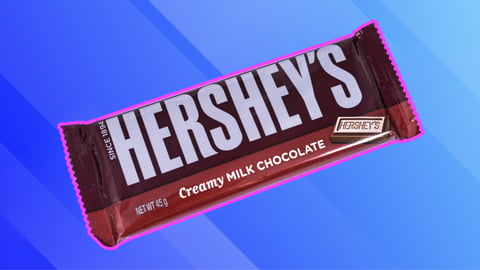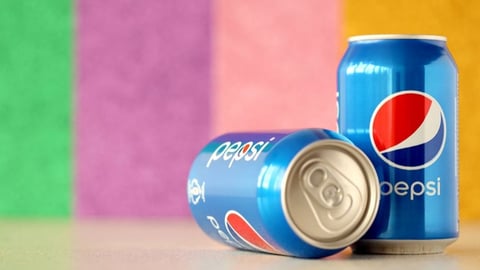Busy BEES: Inside AB InBev’s Data-Sharing Transformation
As Anheuser-Busch InBev plots its future, expect its sprawling BEES e-commerce business to play an increasingly central role — ultimately becoming the primary method in which the company sells.
A B2B digital platform that’s currently live in 16 countries and accessible via a mobile app, BEES has been a key component of AB InBev’s strategy for today’s new commerce environment. With more than half of the No. 8 publicly owned consumer goods company’s net revenue stemming from digital sales, BEES has not only unlocked new sales opportunities but also contributes a wealth of data for the CPG to leverage throughout the enterprise.
The platform enables AB InBev partners to place orders for more than 500 brands, manage invoices, schedule deliveries, and earn rewards, and as the company brings BEES to new markets across the globe, it’s beefing it up to include a marketplace with third-party manufacturers and adding new features like alternative payment methods to transform how the company uses technology to do business.
“It started really as a sales process and sales order-taking application, but you're sitting on data that the whole business can make use of,” Andrew Murray, AB InBev global VP, revenue and analytics for BEES, tells CGT. “And so now we're making that more and more available, and using technology to enable those other areas of our business to gain the efficiency and the benefits of data and technology in the same way sales is.”
Opportunity Starts Buzzing
The BEES platform received an auspicious start as a tech innovation. Digitizing its route-to-market and using technology to be more efficient had long been a priority for AB InBev, says Murray, but with many initiatives localized in specific countries, investments began to aggregate and become inefficient. As a result, the company began in 2019 to migrate toward a more consolidated approach that could be scaled beyond the local level.
Selecting the Dominican Republic as a pilot market, the company invested heavily to both leverage previous learnings and develop the potential new BEES model. It took about nine months to prove a success case before beginning a fairly aggressive rollout to other markets.
Enter, of course, the pandemic and its accompanied digital acceleration, and that aggressive plan was ignited to the nth degree. BEES is now available in Argentina, Brazil, Canada, China, Colombia, the Dominican Republic, El Salvador, Ecuador, Mexico, Panama, Paraguay, Peru, South Africa, Tanzania, the United States, and Uruguay.
“It went from people wanting to kind of sign up at some stage and see what was happening in other markets, to ‘I need this yesterday because my customer wants some solution,’” says Murray.
BEES at last count had more than 2.5 million monthly active users, which is up from around 1 million monthly active users 12 months prior. It recorded upward of $20 billion in gross merchandising value in 2021 — an increase from 2020’s $3 billion.
[See also: AB InBev Unveils New Brand Identity]
The BEES organization — the company calls it “the Hive” — has about 1,300 employees, the majority of whom are developers based in Brazil, and Murray says the company will continue to invest heavily in growing these ranks.
Learn to Grow, and Grow to Learn
Each new BEES market carries its own nuances, particularly regarding the breadth of portfolio, whether products are consumed on-premise, and the varying routes to market. The U.S. wholesaler network, for example, required AB InBev to consider different touchpoints and stakeholders to develop an end-to-end technology experience that ultimately reached a retailer.
With that said, markets are more alike than they are different, Murray says, particularly when it comes to the pain points of small- and medium-size retailers in traditional trade markets — such as a lack of visibility into delivery times. While solving these challenges may be low-hanging fruit, he notes, they’re not trivial.
AB InBev doesn’t require retailers to use BEES, but the adoption rate 90%-plus in most markets, and it’s leveraging artificial intelligence and machine learning to both act upon these insights and provide better customer service. The company can supply interactions and recommendations to its partners that are personalized down the individual retailer level, recommending not only better-performing products but also those that can help a retailer better balance their inventory.
Over 80% of BEES customers make purchases each month that are influenced by its algorithms, according to the company, with orders influenced by algorithms 3% larger on average than those built entirely from the catalog.
As BEES progresses, the learnings are becoming more refined — including surrounding how to develop the company’s portfolio more rapidly — and traveling more quickly and efficiently across the enterprise.
“As we start to roll out innovations with digital campaigns, as well as the in-market physical executions — what's working, what's not working — that feedback loop is quicker with the digital technology that we have today,” Murray says. “And as we learn in certain markets, you have data that can be shared very rapidly with another country around [what’s] working or not working for portfolios that have similar issues they’re trying to address, [such as] with innovation.”
Noting that BEES now captures an increasingly large amount of shopper behavioral data, the company utilizes a modern customer data platform (CDP) such that every data point is instantaneously sent to hundreds of downstream tools used by teams across the organization in near real time. It’s also leveraging the data to develop more tech solutions for the organization beyond its sales divisions, including building additional products that are using the same data platform to serve its logistics and marketing organizations. There, these divisions have access to such insights as product turns and retailer purchases.
Beyond sales, there are also opportunities to use this data to further streamline efficiencies and processes within the company. “Everything kind of comes from the consumer through to the retailer, all the way back into our back operations. The more that we're able to drive insights from that, I think the more nimble we can be as an organization and more efficient we can be at AB InBev,” Murray says. “I think BEES will play a critical role in that evolution as well.”
Pollinating for Growth
The BEES roadmap had identified about a dozen additional countries to enter over the next few years. In addition to large countries that are all-in on the platform, AB InBev also see prospects in smaller countries with fewer retailers where it can grow new business opportunities.
It’s also partnering with other consumer goods companies to use the BEES technology, providing insight into consumer behavior and white space opportunities for these CPGs, and it counts such companies as Mondelez International, Mars, E&J Gallo Winery, Beam Suntory, and Pernod Ricard as partners in its ecosystem.
[See also: AB InBev's Estrella Jalisco Prompts Job Seekers to ‘Live Their Star’]
But the BEES components it’s perhaps most bullish about are the marketplaces it’s developing for BEES retailers to purchase not only AB InBev products but also those from third-party manufacturers, a strategy that’s currently driving incremental value and expected to play a key role in its growth, Murray says. Participating suppliers benefit from access to an established retail base, tech platform, logistics, and route-to-market, while AB InBev gets yet another moment to provide a seamless commerce experience for its retailers.
“We believe as they grow and have a better-performing business, so too will our business,” Murray says on the decision to sell other companies’ products through BEES. “We’re looking at where the spend of those retailers are, which partner companies are interested in leveraging the power of the technology that we have, and trying to marry those two together in the platform.”
While saddled with the typical obstacles of most new ventures — primarily balancing its opportunities with its priorities — the company continues to implement the learnings in each market it enters, as well as incorporate retailer feedback. Given the trailing role technology has historically played in the B2B space vs. consumer, the company is especially mindful of not adding tech just for the sake of having shiny gadgets to play with, according to Murray.
The retailer feedback thus far has been overwhelmingly positive, he says, with NPS scores increasing nearly 10 points in regions with BEES. The platform has especially received high marks for increasing transparency into pricing, promotions, and invoicing, as well as enabling retailers to order items from their phone at the moment they need them — and not being forced to wait for someone to physically take an order and hope they remember what they need.
[See also: How AB InBev’s Zé Delivery Hit 27 Million Orders in 2020]
AB InBev has also been adding new features based on retailer feedback, such as alternative payment methods like Pix in Brazil, flexible delivery dates, and more options within its rewards program.
“Some of the products we've developed have really been the result of showcasing what we're doing and collecting feedback diligently,” Murray says. “So, for us, it's just the diligent collection of that feedback, which is helping to guide where the future will go. We're super excited that the engagement with the application is as strong as it is, because that feedback loop can then be addressed more quickly.”
And though it lacks a crystal ball, to say AB InBev is bullish on future of BEES would be putting it mildly, especially given the portion of the company’s footprint it currently obtains. “I think this is the way that we're going to do business from a sales perspective at AB InBev going forward,” Murray notes. “I think that is more of the present than the future.”





